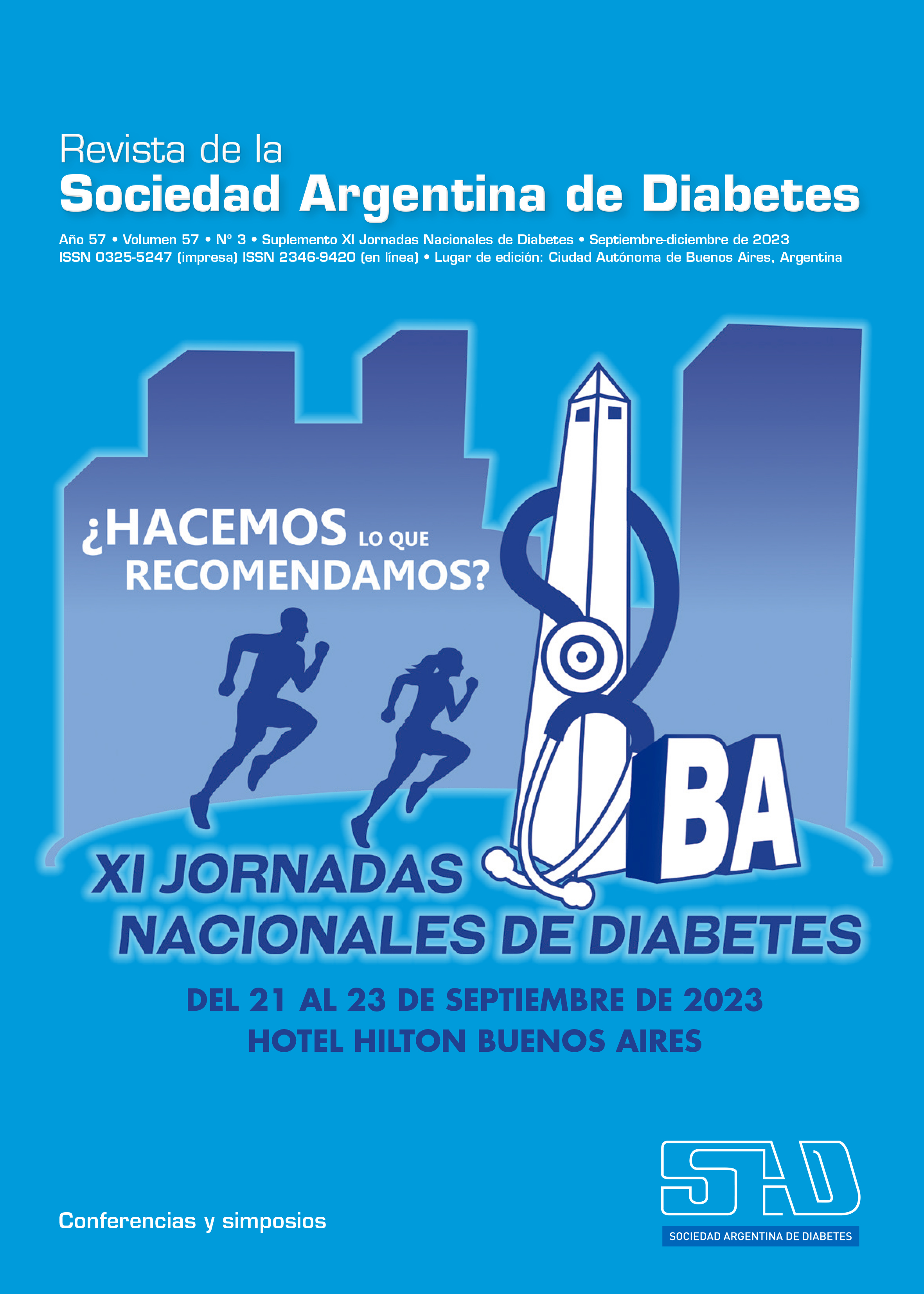Is there a glycemic threshold for microvascular complications?
DOI:
https://doi.org/10.47196/diab.v57i3Sup.668Keywords:
diabetes, microvascular complicationsAbstract
In a paper in the journal of the Argentine Diabetes Society in 1997, Dr. Juanjo Gagliardino told us that "the new values for the diagnosis of diabetes seek a better correlation with the appearance of microangiopathic lesions in the retina1, suggesting the existence of a threshold above which diabetic retinopathy (DR) increased substantially in frequency, referring to the new fasting blood glucose (FBG) value for the diagnosis of diabetes mellitus (DM) of 126 mg/dL, announced by the International Group of Experts convened by the American Diabetes Association that re-evaluated the classification and diagnostic criteria established by the National Diabetes Data Group in 19792,3.
But is there really a threshold? Do the current cut-off values for the diagnosis of DM of GA, post-load glycemia (PGC) and HbA1c rule out that a patient with 122 mg/dL fasting and 189 mg/dL at 120' or an HbA1c of 6.0 % can develop microangiopathic lesions?
A substudy from the Diabetes Prevention Program notes that more careful long-term glycemic screening in this cohort and documentation of DR during prediabetes support the idea that retinopathy can occur on a broader continuum of glycemia than the one covered by the current diagnostic criteria, proposing that these parameters, based on the associated risk of DR, should be reconsidered4.
There are numerous studies in which microvascular complications appear during prediabetes, so the idea of a threshold should be severely questioned5,6,7.
References
I. Gagliardino JJ. Los nuevos criterios para el diagnóstico y clasificación de la diabetes: ¿un desafío para el sector salud? Rev Soc Arg Diab 1997;31(3).
II. Classification and diagnosis of diabetes mellitus and other categories of glucose intolerance. National Diabetes Data Group. Diabetes 1979 Dec;28(12):1039-57.
III. Report of the Expert Committee on the Diagnosis and Classification of Diabetes Mellitus. Diabetes Care 1997 Jul;20(7):1183-97.
IV. Diabetes Prevention Program Research Group. The prevalence of retinopathy in impaired glucose tolerance and recent-onset diabetes in the Diabetes Prevention Program. Diabet Med 2007 Feb;24(2):137-44.
V. Nagi DK, Pettitt DJ, Bennett PH, Klein R, Knowler WC. Diabetic retinopathy assessed by fundus photography in Pima Indians with impaired glucose tolerance and NIDDM. Diabet Med 1997 Jun;14(6):449-56.
VI. Cao D, Yang D, Huang Z, Zeng Y, Wang J, Hu Y, Zhang L. Optical coherence tomography angiography discerns preclinical diabetic retinopathy in eyes of patients with type 2 diabetes without clinical diabetic retinopathy. Acta Diabetol 2018 May;55(5):469-477.
VII. Cheng YJ, et al. Association of A1C and fasting plasma glucose levels with diabetic retinopathy prevalence in the U.S. population: Implications for diabetes diagnostic thresholds. Diabetes Care 2009 Nov;32(11):2027-32.
Downloads
Published
Issue
Section
License
Copyright (c) 2023 on behalf of the authors. Reproduction rights: Argentine Diabetes Society

This work is licensed under a Creative Commons Attribution-NonCommercial-NoDerivatives 4.0 International License.
Dirección Nacional de Derecho de Autor, Exp. N° 5.333.129. Instituto Nacional de la Propiedad Industrial, Marca «Revista de la Sociedad Argentina de Diabetes - Asociación Civil» N° de concesión 2.605.405 y N° de disposición 1.404/13.
La Revista de la SAD está licenciada bajo Licencia Creative Commons Atribución – No Comercial – Sin Obra Derivada 4.0 Internacional.
Por otra parte, la Revista SAD permite que los autores mantengan los derechos de autor sin restricciones.




























